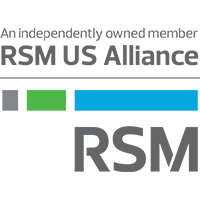The Federal Trade Commission (FTC) reports that American consumers lost $8.8B to fraud in 2022, up from $6.1B in 2021. The Association of Certified Fraud Examiners estimates annual business revenue losses of 5% for the same period. With 2023 data still incomplete, the incidence of fraud continues to rise steeply in the wake of a near-perform storm of complex circumstances.
- The rise of Covid-19, which precipitated an economic downturn, also led consumers to shift more of their shopping and personal business to online transactions, allowing fraudsters increased opportunities to engage in first- and second-party fraud.
- Government programs, like the Small Business Association’s Paycheck Protection Program (PPP) and Economic Injury Disaster Loans (EIDLs), have led to a substantial increase in civil and criminal investigations as organizations and/or individuals have engaged in egregious examples of fraud.
- The rise of Artificial Intelligence (AI) makes it harder for consumers and organizations alike to distinguish real communications and websites from the fraudulent.
As fraudsters leverage increasing opportunities for criminal gain, surveillance and prevention efforts need to keep pace. Understanding which top fraud trends will continue in 2024 allows organizations and individuals to effectively beware and prepare themselves to avoid being caught off guard.
Trending Frauds
- Synthetic Identities: Fraudsters create new identities by combining elements of actual personal identifying information (PII) with false details. The inclusion of verifiable identifiers, such as social security numbers, enables the fraudster to open accounts. In 2023 to date, the FTC has received 5.7 million fraud and identity theft reports with total losses estimated at $10.2 billion. Synthetic identity fraud often begins with a stolen social security number being assigned to a new set of Personally Identifiable Information (PII), which can then be used to create new business profiles, email addresses, and phone numbers. Finding commonalities and irregularities can help detect this type of fraud.
- Money laundering rings: Synthetic identities allow fraudsters to continue engaging in money muling and account takeovers. In a money muling operation, the fraudster convinces an individual to use their own PII to apply for credit for a fraud operation, through which money launderers can easily move illicit funds. Using synthetic identities, many mules may not know they are part of the fraud ring.
- Triangulation fraud: Fraudsters insert themselves as secret intermediaries in operations involving third-party sellers and capture consumers’ credit card information. Orders are fulfilled using previously stolen credit card information, leaving the purchaser initially unaware that their credit information has been compromised. Online marketplaces are the biggest losers in these scenarios, since attentive cardholders can identify fraudulent purchases and apply for reimbursement. Shoppers should be cautious of sellers with no reviews or online deals that are “too good to be true,” while the rate of discrepancies between account and delivery addresses may be a red flag for e-tailers.
- Business Email Compromise (BEC): Fraudsters are using AI tools to hack into a company’s email system or network and then use that access to impersonate an executive or employee to make fraudulent transactions. In a subtype fraud known as Vendor Email Compromise (VEC), criminals present fake invoices (sometimes using real company names) for direct payment into spoof accounts. Government agencies, global corporations, and even tech giants have fallen prey, losing millions of dollars (or in some instances, confidential employee information) because they trusted email instructions to change payment protocols, click links, or transfer funds.
- Insider Fraud: Presented with the opportunity, some employees will defraud their employers, especially if there are gaps in internal controls within an organization. Asset misappropriation schemes, financial statement fraud, and corruption and bribery will continue if public, private, non-profit, and governmental agencies do not invest in adequate resources enabling proper internal controls and a segregation of duties within the organization.
Given the increase in automation, online and mobile app usage, the latest AI, and machine-learning tools, organizations must continually assess their internal controls and processes to protect resources and consumer information. Fraudsters will always look for vulnerabilities in a company’s fraud controls, but real-time risk assessment can identify weaknesses in internal controls and recommend measures to prevent fraud and/or money laundering. Our team offers a deep bench of specialists who have identified, collected, and analyzed data in an evolving financial landscape to assist plaintiffs, defendants, and government agencies in litigation matters related to money laundering, fraud, embezzlement, misrepresentation, tax evasion, and other financial crimes.



